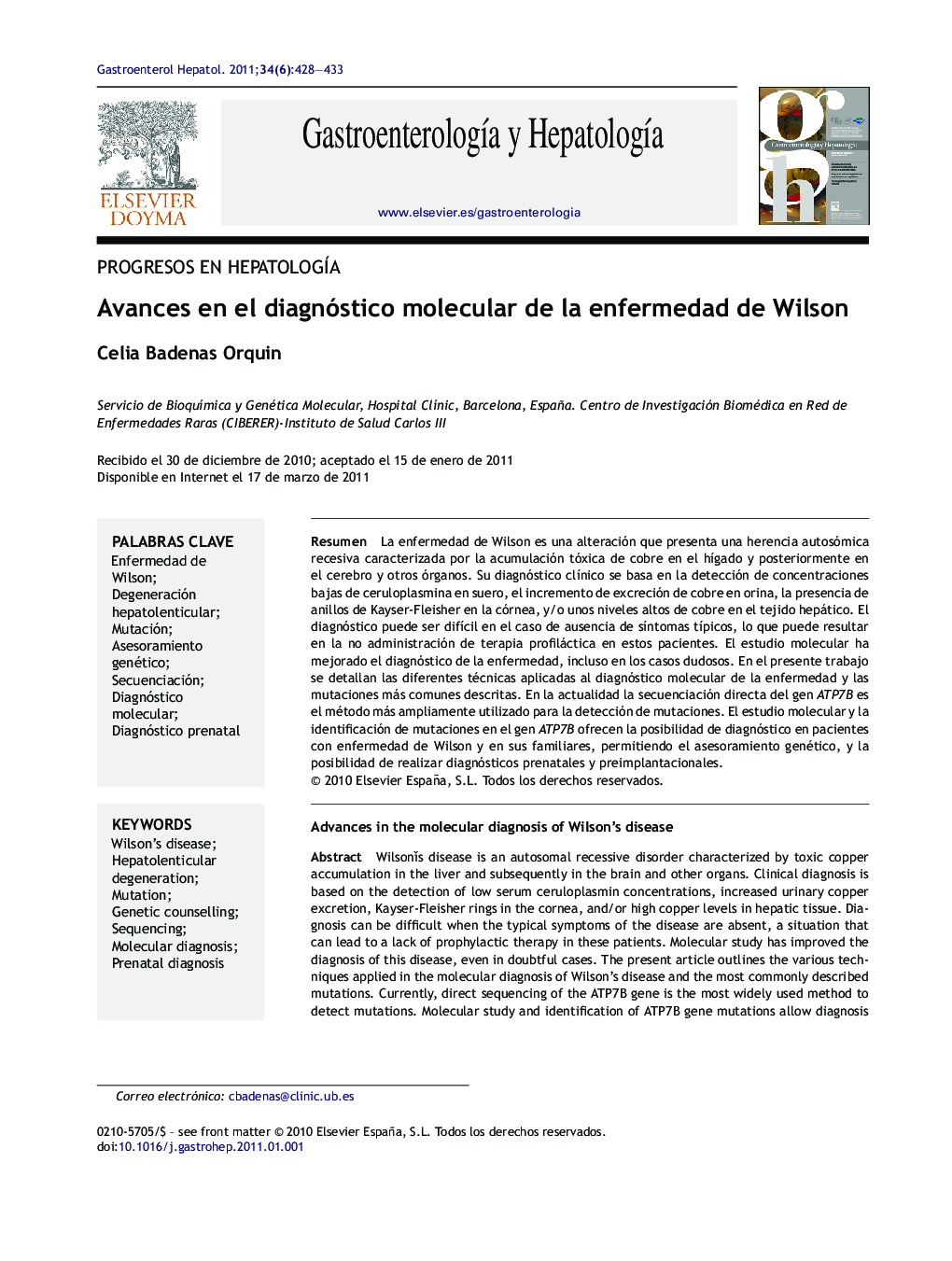| Article ID | Journal | Published Year | Pages | File Type |
|---|---|---|---|---|
| 3288457 | Gastroenterología y Hepatología | 2011 | 6 Pages |
Abstract
WilsoÅs disease is an autosomal recessive disorder characterized by toxic copper accumulation in the liver and subsequently in the brain and other organs. Clinical diagnosis is based on the detection of low serum ceruloplasmin concentrations, increased urinary copper excretion, Kayser-Fleisher rings in the cornea, and/or high copper levels in hepatic tissue. Diagnosis can be difficult when the typical symptoms of the disease are absent, a situation that can lead to a lack of prophylactic therapy in these patients. Molecular study has improved the diagnosis of this disease, even in doubtful cases. The present article outlines the various techniques applied in the molecular diagnosis of Wilson's disease and the most commonly described mutations. Currently, direct sequencing of the ATP7B gene is the most widely used method to detect mutations. Molecular study and identification of ATP7B gene mutations allow diagnosis of individuals with Wilson's disease and their relatives, as well as the possibility of genetic counselling and prenatal and preimplantation genetic diagnosis.
Keywords
Related Topics
Health Sciences
Medicine and Dentistry
Gastroenterology
Authors
Celia Badenas Orquin,
